Amazon Basin is the biggest lowlands on Earth. It encompasses seven million square kilometers (1.7 billion acres), of which five and a half million square kilometers (1.4 billion acres) are covered by the rainforest (Amazon jungles). This is the world's largest tropical rainforest, representing over half of the planet's remaining rainforests. The life force of the rainforest is the Amazon River – the largest river in the world by waterflow. It accounts for approximately one-fifth of the world's total river flow. The Amazon River and its tributaries gather water from the territory of 9 countries: Peru, Brazil, Columbia, Venezuela, Ecuador, Bolivia, Guyana, Surinam, French Guiana.
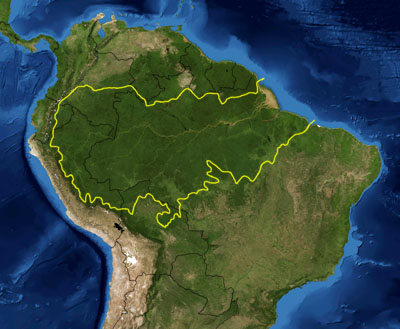
Discovery of Amazonia
The first Europeans to descend the Amazon River from lowlands of the Andes to the Atlantic Ocean was the Spanish conquistador Francisco de Orellana. He joined the expedition of Gonzalo Pizarro to explore the area east of from occupied Peru – towards the equator. After a number of hardships Orellana left the expedition and moved downstream in the discovered river. A long and difficult path brought them to the Atlantic Ocean.
Francisco de Orellana not only discovered this magnificent river for Europeans, but also named it for women warriors they encountered after months of sailing downriver.
The modern researchers don’t believe the evidence of Francisco de Orellana and his companions about the existence of the tribe of warrior women – amazons. Most probably, they encountered women fighting together with men and the rest of the story was the misunderstanding between the Spanish and Indians.
However, the route of Francisco de Orellana and his group still boggles the mind, because these places are difficult to pass and wild even today. They could not only cross the impassable jungles finding food with difficulties, but also withstand numerous unknown tropical diseases!
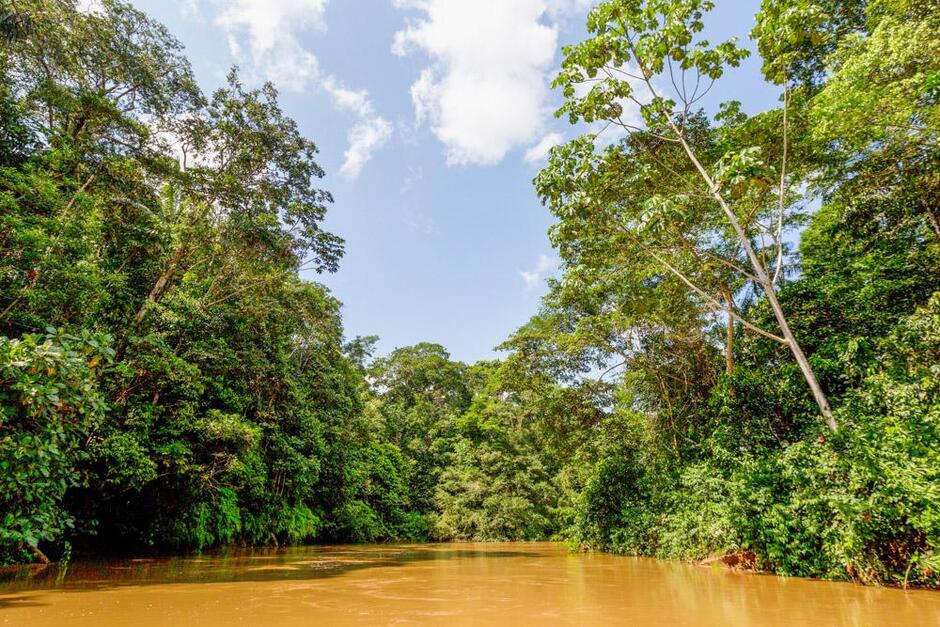
Flora and fauna
The Amazon jungle has a unique ecosystem. There are many endemic flora and fauna here that you can see only in this part of the world.
The Amazonian rainforests have unparalleled biodiversity! One in ten known species in the world lives in the Amazon Rainforest. This constitutes the largest collection of living plants and animal species. Some experts estimate that one square kilometer (247 acres) may contain 150,000 species of plants including 75,000 types of trees. This region is one of the least-studied tropical regions on the planet and many species of flora and fauna are still unknown to scientists. According to the researcher Michael Hopkins the real number of plants of Amazonia is three times more species than has been discovered so far.

Victoria Regia
The most famous plant of the Amazonia Victoria regia is the largest water lily in the world. Many travellers described the beauty of Victoria regia, number of poems were dedicated to this flower. The Victoria Regia has a leaf that is up to 3 m (9.8 ft) in diameter and can contain up to 50 kg (110 lb). Victoria regia blooms from the beginning of March to July. The flowers have slight hint of apricot fragrance and are up to 40 cm in diameter. You can see the blooming Victoria Regia only at nights, in the morning the flowers sink under water. The flowers are white the first night they are open, the second night the color of the flowers changes becoming pink to ruby red, depending on the specific plant.
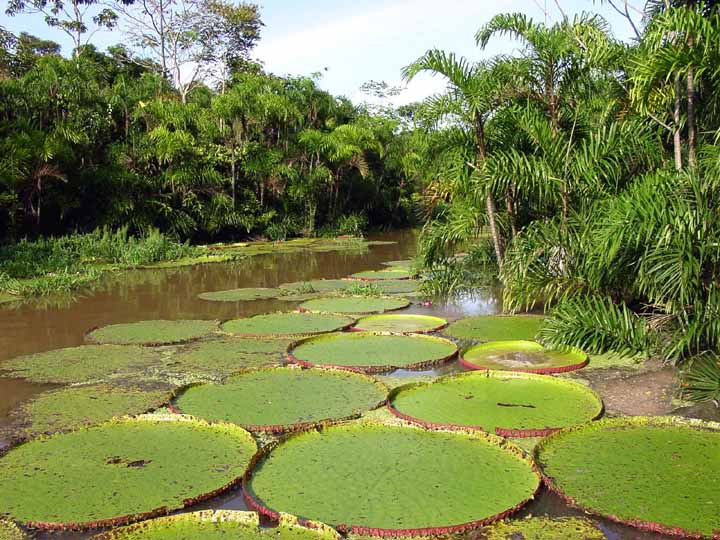
Fauna
The Amazon is home to more species of plants and animals than forests of Africa and Asia. It’s tremendously rich in animal life, the jungle is populated by insects, arachnids, reptiles, amphibians, birds and mammals. The Amazon basin contains more than 2,000 species of fish and most of them are known to aquarium owners: guppy, angelfish, swordtail. Here you can see 1 meter long arowana fish. It has an ability to jump out of the water and capture bugs from tree branches. However, piranha is still the most famous inhabitant of these rivers – a predatory fish that can converge on big predators crossing the river.
The capybara is a fairly common sight that can be seen on the banks of Amazon river and its tributaries. It looks like a cross between a guinea pig and hippopotamus and can weight up to 100 lb. or 45/50 kg. Besides you can see pink river dolphins, caimans, river turtles, tapirs. On the shores of rivers and lakes on can see anacondas – the biggest snake in the world, spending most of the time in the water.

Amazonia is a place of habitat for jaguars – a large cat species. The jaguar is a stalk-and-ambush type of animal and attacks in the evening and before sunrise from high grass or jumping from a tree. It preys on a range of animals such as capybara, hoofed mammals like musk hogs and tapirs, birds, monkeys, snakes, rodents and even turtles. Its strong jaws are capable to cracking open of turtle shells. This predator is an excellent swimmer and can even chase its prey in the water.
In pre-Columbian America, the jaguar had a significant role. There are number of indigenous legends where the jaguar is described as a symbol of power and is well respected.

Vilcabamba – lost city of the Incas
The Amazon jungles hide one of the most exciting legends about the lost city of the Incas. After the Spanish invasion of Peru the last Incan rulers left for some city in the jungles where they lived from 1536 to 1573. The name of the city was Vilcabamba. Spanish friar and chronicler Fray Martin de Murúa describes this place in his Historia General del Pirú (General History of Peru) as follows: “...the Incas enjoyed almost the same luxuries, greatness and splendour of Cuzco in this distant, or, rather exile land. For the Indians brought whatever they could get from outside for their contentment and pleasure. And they enjoyed life there”.
The Spanish could visit these places and describe them in chronicles, but then the location of Vilcabamba was forgotten. Researchers and travellers have been trying to find this place for many years. In 1911 the scientist from Harvard Hiram Bingham visited Peru with the same intention. He found Machu Picchu and believed that it was the fabled Vilcabamba. But further research and comparisons of Vilcabamba with Machu Picchu proved Hiram Bingham wrong.

Most probably, the legendary Vilcabamba is associated with the Espíritu Pampa, which is located in the jungles about 500 km north from Cuzco. Hiram Bingham discovered this place too in 1911 but did not realise its significance and size. During the centuries past after disappearance of the Incas, the tropical forest almost completely covered the city. Hiram Bingham only discovered several small buildings and did not pay too much attention to them. This discovery belongs to American explorer Gene Savoy. He and his Andean Explorers Club expedition discovered the real size and solved the mystery of Espíritu Pampa – ancient Vilcabamba in 1964.
Huge Indian cities in the jungle
The Spanish chronicles, particularly the diary of the Spanish Dominican friar Gaspar de Carvajal indicate huge Indian cities in the jungle. It was thought for many years that the travelers had made a mistake and exaggerated the sizes of discovered cities and number of inhabitants. Why the scientists did not believe the possibility of the existence of big cities in the jungles? The thing is that the acidic soil of the Amazonia is not fit for farming and a large number of people would not have enough food to live here. But later, they found a big unusually fertile land – Terra Preta. Since the latter half of the 20th century scientists decided that that people in the Amazon created Terra Preta many centuries ago. The soil unfit for farming was fertilized with complex compost, which completely changed its nature. The effect was so strong that Terra Preta is still fertile. This unique fertilizer is still cannot be decoded or reproduced.
This discovery confirmed the possibility of existence of big cities in the Amazon jungles during the Incan Empire.

Population and languages of Amazonia.
According to existing data, only about 500,000 Amazon Indians presently survive, which are distributed among an estimated 500 Amazon tribes. This includes about 75 uncontacted nude Amazon tribes living in voluntary isolation.

National parks of Amazonia
There are many national parks in the territory of the Amazonia: National Park Manu – one of the biggest conservation area in the world, Cordillera Azul, Pacaya-Samiria, Alto Nanay, Pucacuro, Ampiyaco, Allpahuayo – Mishana Parks and many others.

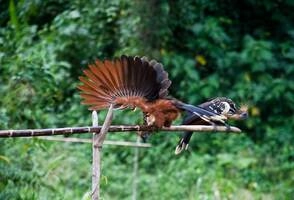
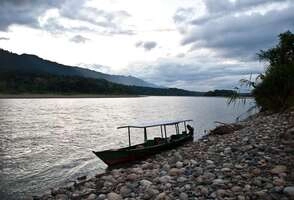



Region climate
Average temperature throughout the year - 30ºC (86ºF)
Rainy season: mid December – mid May
Dry season: mid May – mid December
The highest river level is in May, the lowest level – in September
You can visit this region at any season, as each has its own advantages. In the rainy season one can see blooming flowers attracting birds and primates approaching the very edge of water. In dry season, when the level of the water is lower you can see migrating fish shoals, birds attracted with easy pray and caimans hunting fish.
Where to go
The 2 most interesting places to visit in the Peruvian Amazon jungle: Iquitos and Manu National Park.
Iquitos is the biggest city in this region and has no roads connecting to other cities making it the largest, most isolated city on any continent! The city can be reached only by airplane or boat, with the exception of a road to Nauta, a small town roughly 100 km (62 mi) south.
The date of foundation of the city is thought to be 1757. It was established as a Jesuit mission. Iquitos started to grow and thrive through the “rubber boom” of the first decade of the 20th century. They started to manufacture rubber from natural resources - the rubber tree growing in the Amazon Selva. The owners of the plantations or rubber barons were rich and built luxurious houses for themselves, which gave the city an inimitable style.
A number of very interesting tours to the jungles are organized from Iquitos, visit here to get plunged into the world of jungles, meet the local tribes and learn about their culture.

Manu National Park is one of the biggest protected areas in the world: it covers almost 2,000,000 hectres (5000000 acres). The park protects several ecological zones ranging from 300 to 4000 meters (984 to 13,123 ft) above sea level. Because of this topographical range, it has one of highest levels of plant, insect and animal biodiversity of any park in the world. Manu is the home to the some of the greatest biodiversity and the greatest biomass in the world!
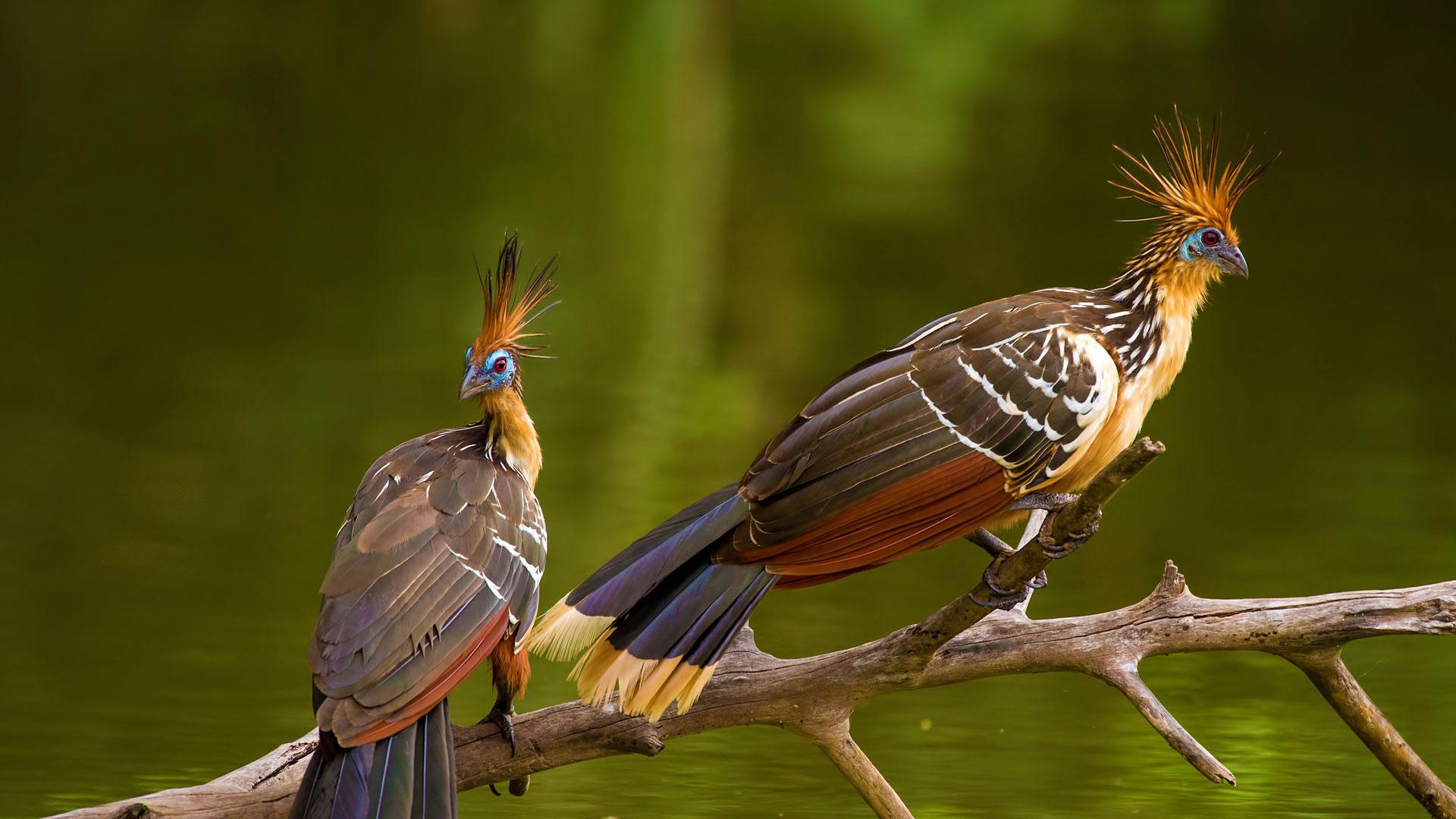
Most of the park is closed for visitors and only scientists have an access to this part of the park, but even they have a difficulty to receive a pass. Entry to the reserved area is strictly controlled and visitors can only visit the area with an authorized guide. The number of daily visitors is limited. This part of the park has a tremendous diversity of landscape, wildlife and vegetation. The river bends form lagoons with wonderful flora and fauna diversity.
How to get there
Iquitos
The flight time from Lima to Iquitos is about 1 hour 45 minutes. There are 8-9 flights per day in both directions. Airline companies operating this route include LAN Perú, Peruvian Airlines and Star Perú.
Manu National Park
The groups accompanied by certified guides leave for Manu from Cuzco. To Cuzco you can get from Lima either by plane (1 hr) or by bus (24 hrs).
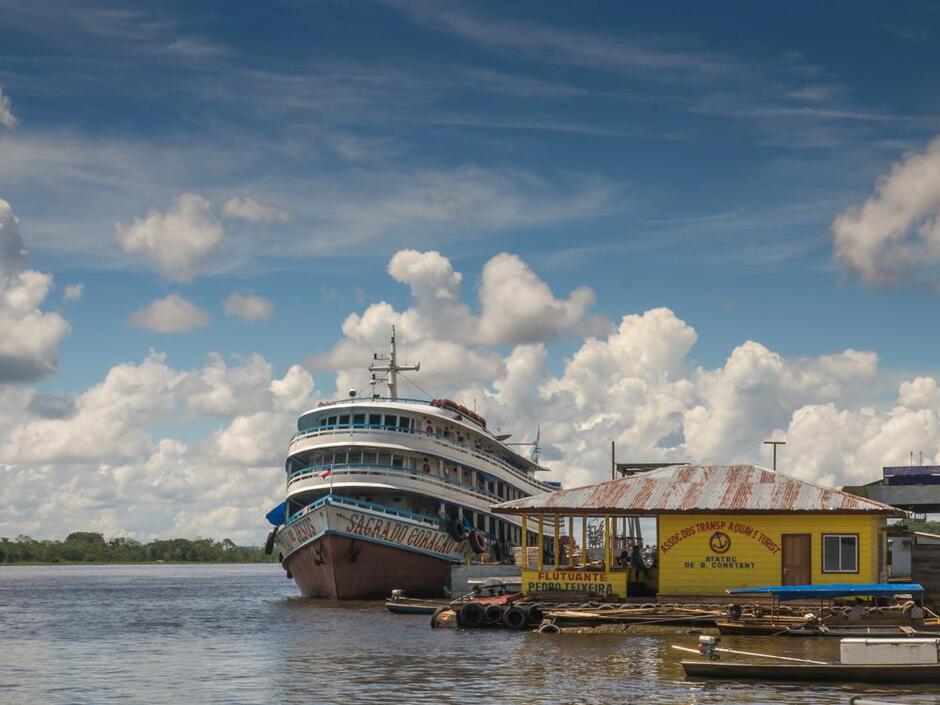
Organized tours with professional guides. Group or private services. All categories of hotels.
Short group excurstions with English-speaking guides for independant travelers.
We look forward to working together to turn your dream trip into lifetime memories!